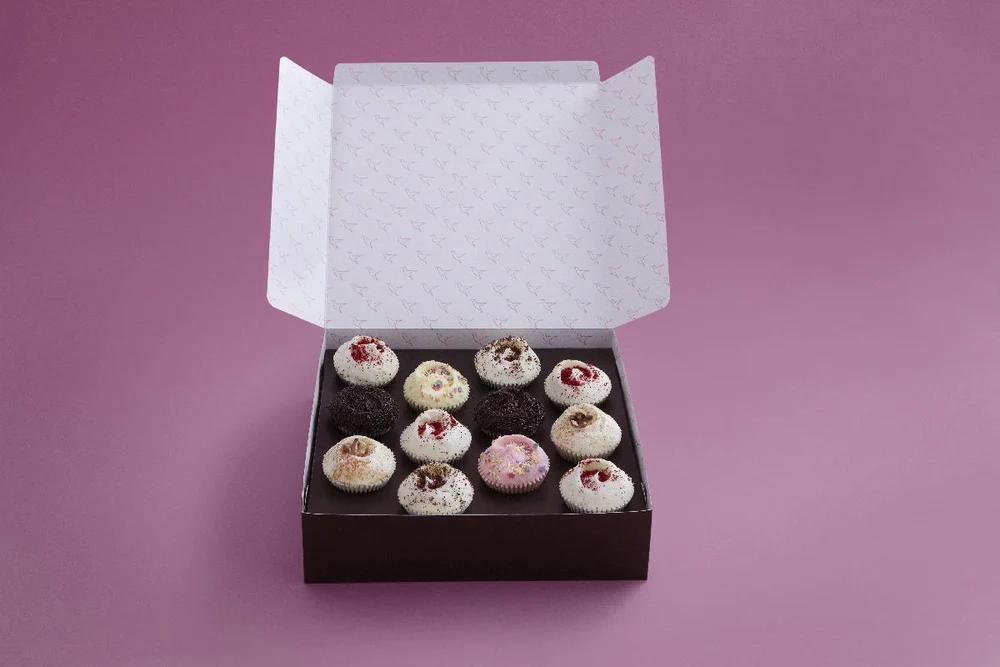
Your oven is easily the most important variable in determining the outcome of your bakes.
Baking at the right temperature is important not only for determining baking times but it will also affect the final quality of your cakes.

What do I need to know about baking in non-fan assisted versus fan assisted ovens?
We test our recipes in a conventional non-fan assisted oven. If you bake using a fan-assisted oven, be aware that these ovens cook things faster. Refer to your oven manufacturer’s instructions booklet for the best advice in terms of converting baking times.
As a general rule of thumb, if you’ve misplaced those instructions, you can knock the temperature down by 10 per cent to reduce the temperature a little. Just follow the recipe as written and bake to the same cooking time.

My cupcakes are turning out like volcanoes, what’s happening?
This happens when the temperature is too high and frequently occurs with fan assisted ovens, which are hotter than normal ovens.
Next time you bake cupcakes, turn your oven down by about 10 per cent and see how you go.

How do I test the temperature of my oven?
You can test how hot (or cool) your oven is with an oven thermometer. We swear by this bit of kit and it can make such a difference to your bakes to know your oven is properly calibrated to the temperature suggested in the recipe.
They are cheap to buy and sit on a shelf in your oven or hang on the shelf. To use an oven thermometer, place the oven thermometer inside your oven before you turn it on. Shut the oven door and turn your oven on and give it time to preheat. When it is up to temperature, look at the oven thermometer through the window.
It will give you an accurate reading so you can turn the temperature up or down from there to get the correct temperature recommended by the recipe.
When you’re confident that the temperature reading on the thermometer is constant and matches the one suggested in your recipe, use oven gloves to take the thermometer out of the oven and let it cool somewhere safe and away from kids, as it does get very hot.
Put your tins in the oven and you’re ready to start baking.

How do oven temperatures affect the final bake?
Generally speaking, higher temperatures will give your bakes a more golden, crisper crust to the sponge or pastry and a low temperature will result in a fluffier, less golden sponge. With some cakes, you want a golden crust and with other cakes you want them to be gently cooked and fluffy.
Recipe developers will always test out which temperatures give the desired end texture, so trust the recipe for the first go and adjust next time if you’d prefer a slightly different result.

What other factors affect cooking temperatures and time when following a recipe?
There are lots of different factors that dictate how quickly or slowly your bakes cook in your oven. Some of these are:

How do I test cakes are cooked through?
Take a metal skewer and insert into the centre of the sponge. If the tin is shallow, insert on an angle to get more of the skewer covered. If you can remove it cleanly from the sponge, it’s done.
If cake mixture is left on the skewer, let it bake for a few minutes longer and test again. The sponge should spring back when lightly pressed and visually the sponge should look a good colour all over.

Oven Temperature Conversion Table
Gas Mark 1 – 275 ° F / 140 ° C / 120 Fan (Cool temperature)
Gas Mark 2 – 300 ° F / 150 ° C / 130 Fan
Gas Mark 3 – 325 ° F / 170 ° C / 150 Fan (Moderate temperature)
Gas Mark 4 – 350 ° F / 180 ° C / 160 Fan
Gas Mark 5 – 375 ° F / 190 ° C / 170 Fan (Moderately hot temperature)
Gas Mark 6 – 400 ° F / 200 ° C / 180 Fan
Gas Mark 7 – 425 ° F / 220 ° C / 200 Fan (Hot temperature)
Gas Mark 8 – 450 ° F / 230 ° C / 210 Fan
Gas Mark 9 – 475 ° F / 240 ° C / 220 Fan (Very hot temperature)

Round Tin / Square Tin Conversion Table
Square tins hold around 25% more than a round tin of the same size. You can work out how to convert a recipe from a round tin to a square tin by reducing by 1 in/2 cm.
Thanks to the edges, square tins are likely to make cakes dryer in the corners, so watch out for that.
Round tin / Square tin
6 in or 15 cm / 5 in or 13 cm
8 in or 20cm / 7 in or 18 cm
9 in or 23 cm / 8 in or 20 cm
11 in or 28 cm / 10 in or 25.5 cm
Follow the link to our our general guide to cake conversions page. For quick troubleshooting, visit our general baking FAQs page.
Follow us on
 hummingbbakery
hummingbbakery





